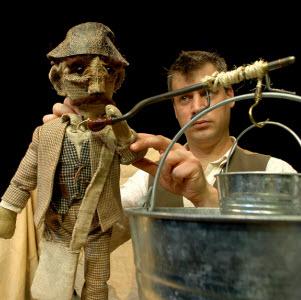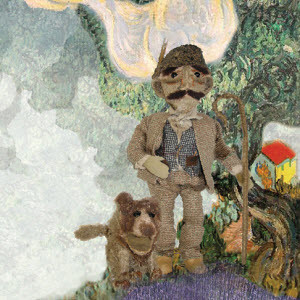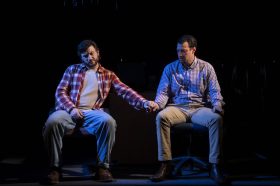“How wonderful it is that nobody need wait a single moment before starting to improve the world.”
Anne Frank
When you turn round to look at an audience and see nothing but entranced joy on every face, children and adults alike, then you know it’s a great play. What else needs to be said?
Edinburgh-based, Puppet State Theatre Company have brought their highly-successful production of The Man Who Planted Trees to Australia with seasons at the Arts Centre and at the Sydney Opera House. Aimed at primary school aged children this is a production that is sure to inspire all those lucky enough to see it.
The Man Who Planted Trees is a puppet play based on the short story by French novelist, Jean Giono, who wrote this 20th Century fable in 1953. It is a gentle yet profound tale in which one man sees the world not as it is, but as it might be. Though no one ever knows who he is or what he has done, his lifelong dedication changes the world that little bit for the better.
Opening in 1910, our narrator, a young man is exploring a desolate treeless valley at the foothills of the Alps in Provence. Desperate for water, he encounters a widowed shepherd, Elzeard Bouffier who helps him. The man discovers Elzeard has made it his task to reforest the area and each day goes out and plants acorns. Over the following 40 years, the man revisits Elzeard who despite set backs, the folly of politicians and the destruction of WW1 and WW2 grows a forest that transforms the land.
To overcome the dramatic problem that Elzeard does not speak, creators Richard Medrington and Rick Corrie noted Giono’s mention of the shepherd’s dog. Thus the talking Dog becomes our guide, and is used as a vehicle for fabulous vaudevillian-style jokes and panto as he interacts with Jean (Medrington). This direct to the audience performance is inter-cut with the traditional story telling in which the Dog then ‘acts’.
This is a polished production that suffers in no way from its estimated 1500 performances around the world since it began in 2006. The puppeteers seem to deliver their lines as freshly and with as much love as the first time it fronted an audience. And there are still moments of spontaneity and improv like when Dog’s eyebrows fell off.
The productions awards include the Eco Prize for Creativity 2007, Total Theatre Award for Story Theatre 2008, Victor Award for best show at the International Performing Arts for Youth Showcase in Cleveland, Ohio and Best Children’s Show at the Brighton Festival 2009. It was also part of Scots on Broadwary in 2009 and performed at the New Victory Theatre in New York.
The Man Who Planted Trees has a script that knows its audience’s attention span: how to engage them, make them laugh and release tension yet get serious and thought-provoking messages across.
The puppetry is simple and creative. Elzeard is a hand stitched, cloth doll, with no strings or glove space yet through Corrie’s performance he is astoundingly dignified and expressive. Dog is hilarious, with his Kermit the Frog like laugh and then there’s the fun of birds strung on a fishing rod swung over the audience and a flock of sheep jangling on a racket.
The set is small, fitting into three packing cases, which themselves are put to use. Changes are rendered with a swish of cloth, a dash of dappled light, and balsa wood models to create powerful simple symbolism. Hessian is big; and beautifully used to provide a simple but effective colour palette, it’s stretched across fan-like trees and draped over the ‘mountains’.
The joy of it for me was not only in the skill and intelligence of the production but in the balance of sensory elements. Tremendous thought that has gone into making this an immersive theatrical experience. Music of times draws you in, French folk tunes that use lute and wind instruments, big bands sounds, the croon of French lyrics. At significant points in the play, evocative essentials oils are wafted over the audience and there’s a bit of watery mist, which the kids love.
Many have wondered whether Elzeard really did exist, though Giono said he was entirely fictional. But in the Q&A at the end, where kids peppered the cast and crew with the cutest queries, Medrington said: ‘Even if it’s not a true story, it’s a story of truth.’ It makes you think about what acorns you might have to plant that can make the world a better place.
For these guys, those acorns would seem to be performing fantastic puppetry for kids.
The season at the Victorian Arts Centre has closed.
See the ArtsHub event listing of The Man Who Planted Trees for information on the Sydney Opera House season over the next two weeks.







